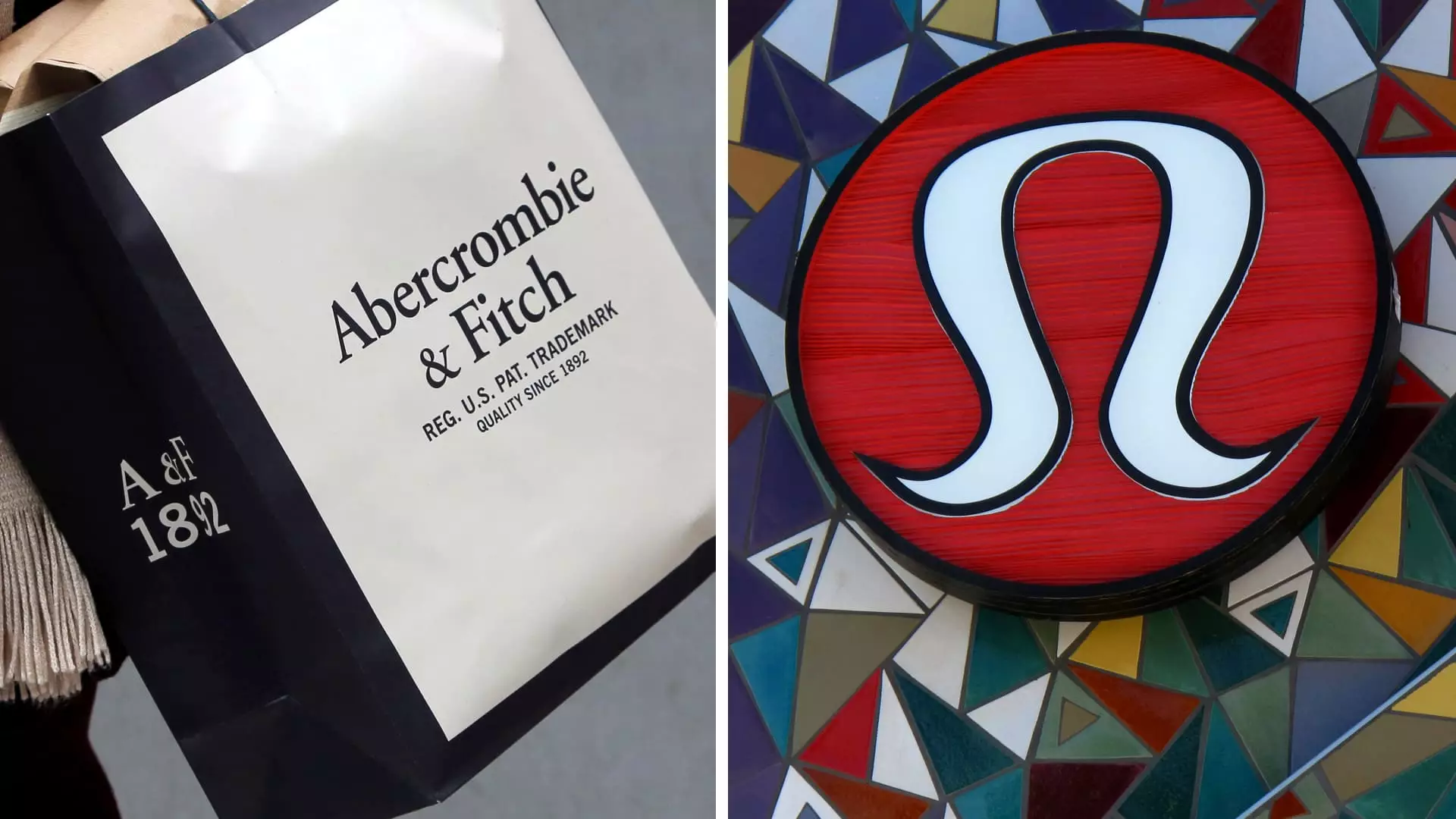The holiday shopping season is a crucial period for retailers, often setting the tone for their financial performance in the upcoming year. This year, early reports from various big-name retailers in Orlando demonstrate a nuanced narrative. While firms like Lululemon and Abercrombie & Fitch posted promising sales growth, the stock market responses were surprisingly negative, highlighting a disconnect between actual performance and investor expectations.
Lululemon announced an optimistic forecast for its fourth quarter, projecting sales growth between 11% and 12%, translating to $3.56 billion to $3.58 billion. This revision from the previous range of $3.48 billion to $3.51 billion indicates robust consumer demand, a sentiment echoed by finance chief Meghan Frank, who noted a strong reception of their product offerings during the holiday season. However, despite raising both sales and profit expectations—including a forecast for earnings per share of $5.81 to $5.85—the company’s shares fell by over 5%. This raises questions about the expectations baked into stock prices versus actual performance metrics.
In parallel, Abercrombie & Fitch witnessed a similar growth surge, adjusting its sales growth outlook to between 7% and 8%, a notable improvement from earlier estimates of 5% to 7%. However, the stock responded negatively, tumbling by approximately 17%. This indicates investor sentiment that has turned skeptical, as the once high-flying retail brand faces challenges of maintaining momentum post a spectacular 21% growth during the previous holiday season. The divergence between Abercrombie’s positive sales figures and its stock market performance profoundly illustrates investor anxiety about sustainable growth rates.
Macy’s, in stark contrast to the positive tones set by Lululemon and Abercrombie, reported lackluster results. The department store’s early sales guidance suggested figures likely to fall at the lower end of its past projections, leading to a steep decline of over 6% in its share price. This underperformance showcases the struggle traditional brick-and-mortar retailers face, particularly in a retail landscape increasingly dominated by e-commerce and evolving consumer preferences.
Urban Outfitters also mined mixed results, reporting a net sales increase of approximately 10% year-over-year, with comparable sales for its successful segments, Anthropologie and Free People, showing positive growth. However, the Urban Outfitters brand itself experienced a decline, revealing the challenges unique to established chains that must compete in a diverse retail environment. The drop in share price, near 5%, underscores a collective investor concern that strong individual performances may not necessarily equate to long-term stability.
As Abercrombie’s CEO Fran Horowitz suggested, the company’s strategic pivot will focus more heavily on profitability over mere sales figures—a strategy that seems prudent given the saturated retail market. By prioritizing sustainable, long-term growth and harnessing operational capabilities, Abercrombie aims to improve its margins and drive shareholder returns. Such a recalibration highlights a growing recognition among retailers that the landscape is shifting, and that merely chasing top-line growth may no longer be viable.
American Eagle also reported a raised outlook, expecting an operating profit increase, yet its shares fell around 4%. This narrative highlights an unsettling reality: even amidst positive sales adjustments, broader market reactions are cautionary. Investors appear to be wary about future growth sustainability across even healthy brands.
The overall retail performance leading up to the holidays has thus far reflected tempered consumer spending amidst economic uncertainties. The National Retail Federation has forecasted modest increases in sales, only between 2.5% and 3.5%, especially when accounting for inflation adjustments. These projections align with Mastercard SpendingPulse’s findings, which suggest only a 3.8% rise in retail sales excluding automotive purchases.
While some businesses have shown pockets of resilience, the overarching sentiment is one of caution. Investors are increasingly skeptical about whether these reports can sustain upward trends in stock prices given the complexities of an evolving market. It remains clear that while the holiday season may provide some bright spots, the recovery for many retailers remains a cautious journey rather than the widespread euphoria seen in previous years.
This holiday season paints a complex picture of retail—a tale of both promise and restraint, with investors carefully navigating the balance between expectations and reality. The landscape going forward will require retailers to not only innovate but also strategically align their aspirations with the shifting values and needs of the consumer.

